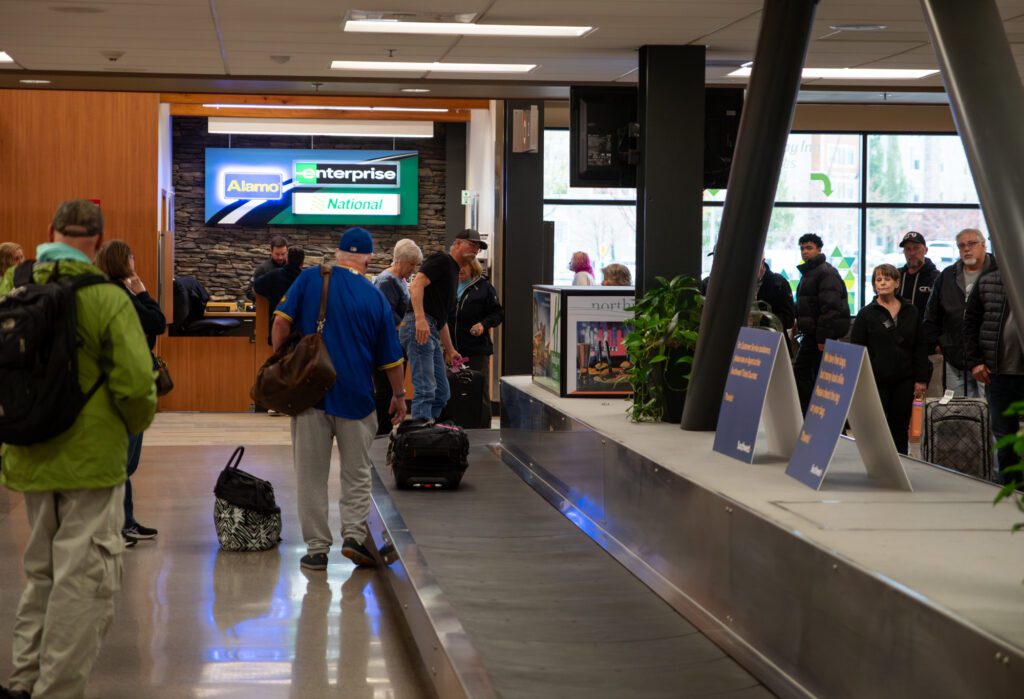Southwest Airlines’ pending departure from Bellingham International Airport wasn’t because the Dallas-based carrier couldn’t fill flights with people or because the area was a bad investment. It was mainly because Boeing was unable to issue enough new planes to replace retiring planes.
That’s according to Jack Penning, a managing partner for Volaire Aviation Consulting, an Indiana-based airline recruiting firm contracted through the Port of Bellingham to provide air service development research, who spoke about the impact Southwest had on Bellingham during a May 7 Port of Bellingham Commission meeting.
Residents in Bellingham were blindsided in April when Southwest announced it would be ending its daily flights out of BLI at the beginning of August, as well as three other airports, and reducing flights from two major airports.
Part of the stated reasoning was that Southwest would be unable to replace its aging fleet as Boeing aircraft deliveries are delayed because the manufacturer continues to be placed under scrutiny for quality control issues.
Kip Turner, the aviation director at BLI, told Cascadia Daily News at the time that the Bellingham market was doing well for Southwest.

Penning’s port commission presentation solidified that statement, reporting BLI raking in millions of dollars in revenue from Southwest.
In the last three and a half years that Southwest operated flights out of BLI, it invested almost $130 million in operations, crew and airport costs, Penning said.
“An airline doesn’t make a $130 million investment to pull out of a market simply because there’s a quick decision made,” he said.
BLI also reaped more than $5 million in direct revenue from Southwest between 2021 and 2023.
“That revenue helps put the airport in a better position to handle future service,” Penning said. “This was a great project because it generated millions of dollars in revenue that the airport wouldn’t have had otherwise.”
On average, 109 people flew on each of Southwest’s three daily flights out of Bellingham, with the stronger numbers during the summer season, Penning indicated. Roughly 471,000 people traveled out of Bellingham on Southwest flights.
Additionally, the flights operated between Bellingham and Denver were very popular, with on average more than 80% of seats booked. The airline was preparing to expand its services from Bellingham to Denver in June.
It wasn’t just Bellingham residents taking advantage of Southwest’s flights. Penning said many passengers traveled from Vancouver, British Columbia, creating competition between BLI and Vancouver International Airport.
With the departure, BLI’s challenge becomes trying to attract other low-cost airlines and continuing to compete with YVR and Seattle-Tacoma International Airport.
Penning pointed to two low-cost carriers, Breeze Airways and Avelo Airlines, that could present an opportunity to offer more flights out of Bellingham to different locations across the American West. Allegiant and Alaska Airlines were also open to replacing the flights that BLI will lose when Southwest leaves.
While Alaska Airlines flights from Bellingham to Seattle remain very profitable, more needs to be done.
“We know we need to get beyond Seattle in order to have full utility not only for Whatcom County but also for passengers who are coming from the other side of the border,” Penning said.
Fliers could also see flights from Bellingham to Portland, Salt Lake City, Denver, Hawaii, Los Cabos, Puerto Vallarta, Los Angeles and Phoenix Sky Harbor added in the future, depending on what carriers might be introduced to BLI.
“We’re going to keep working. This is not throw in the towel and stand by with what we’ve got, that’s not our strategy,” Penning said.
Annie Todd is CDN’s criminal justice/enterprise reporter; reach her at annietodd@cascadiadaily.com; 360-922-3090 ext. 130.




